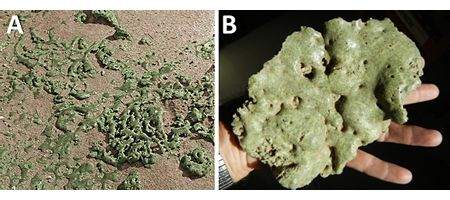A study of rocks in Pennsylvania, South Carolina and Syria provides powerful support for the theory that a major impact helped wipe out mammoths and other megafauna, and destroyed a major prehistoric culture.

They’ve discovered melt-glass material dating back nearly 13,000 years, and formed at temperatures of 1,700 to 2,200 degrees Celsius.
The new data backs up the controversial Younger Dryas Boundary (YDB) hypothesis, which proposes that a cosmic impact took place at the onset of an unusual cold climatic period called the Younger Dryas. This was around the time of several major extinctions, including mammoths and giant ground sloths, and the disappearance of the widely distributed Clovis culture.
“These scientists have identified three contemporaneous levels more than 12,000 years ago, on two continents yielding siliceous scoria-like objects (SLOs),” says H Richard Lane, program director of the National Science Foundation’s Division of Earth Sciences.
“SLOs are indicative of high-energy cosmic airbursts/impacts, bolstering the contention that these events induced the beginning of the Younger Dryas. That time was a major departure in biotic, human and climate history.”
Morphological and geochemical evidence of the melt-glass confirms that it’s not volcanic or human-made. “The very high temperature melt-glass appears identical to that produced in known cosmic impact events such as Meteor Crater in Arizona, and the Australasian tektite field,” says James Kennett, professor of earth science at UC Santa Barbara.
“The melt material also matches melt-glass produced by the Trinity nuclear airburst of 1945 in Socorro, New Mexico. The extreme temperatures required are equal to those of an atomic bomb blast, high enough to make sand melt and boil.”
Similar melt-glass has already been found in Arizona and Venezuela, and the researchers say they haven’t yet identified a limit to the debris field.
“Because these three sites in North America and the Middle East are separated by 1,000 to 10,000 kilometers, there were most likely three or more major impact/airburst epicenters for the YDB impact event, likely caused by a swarm of cosmic objects that were fragments of either a meteorite or comet,” says Kennett.
The archaeological site in Syria where the melt-glass material was found – Abu Hureyra, in the Euphrates Valley – is one of the few sites of its kind to show the transition from nomadic hunter-gatherers to village-based farmer-hunters.
“Archeologists and anthropologists consider this area the ‘birthplace of agriculture,’ which occurred close to 12,900 years ago,” says Kennett.
“The presence of a thick charcoal layer in the ancient village in Syria indicates a major fire associated with the melt-glass and impact spherules 12,900 years ago. Evidence suggests that the effects on that settlement and its inhabitants would have been severe.”






